Russian photojournalist Sergei Ponomarev wins Pulitzer Prize
Categories: Europe | News | Photo project | Society
By Pictolic https://pictolic.com/article/russian-photojournalist-sergei-ponomarev-wins-pulitzer-prize.htmlRussian freelance photographer Sergei Ponomarev, along with The New York Times photojournalist team Mauricio Lima, Tyler Hicks and Daniel Etter, documented the migrant crisis in Europe and the difficulties faced by refugees from the Middle East trying to find asylum in European countries. For their series of shots, the team won the Pulitzer Prize for News Photography.
(Total 18 photos)
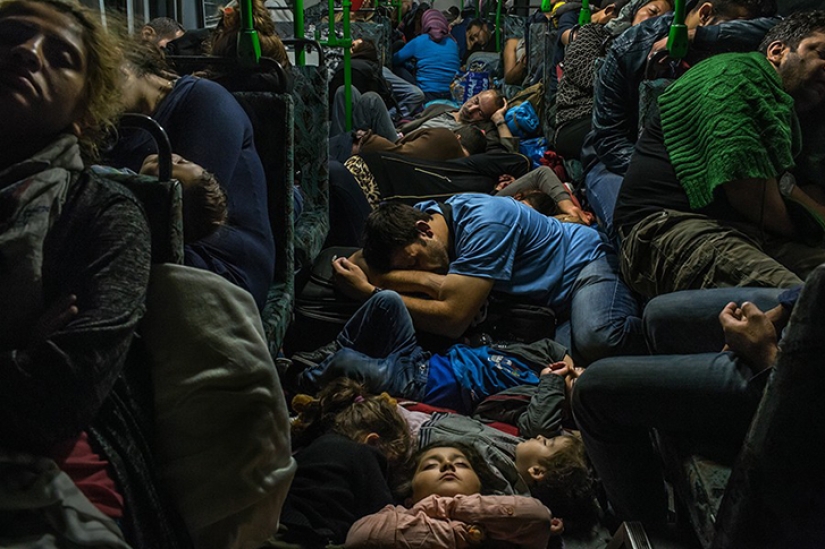 Source: Pulitzer.org
Source: Pulitzer.org

The migrants sailed on a Turkish boat to the village of Skala on the Greek island of Lesvos. The owner of the boat delivered about 150 people and tried to escape back to Turkey, but he was arrested in Turkish territorial waters. (Sergey Ponomarev, The New York Times - November 16, 2015)
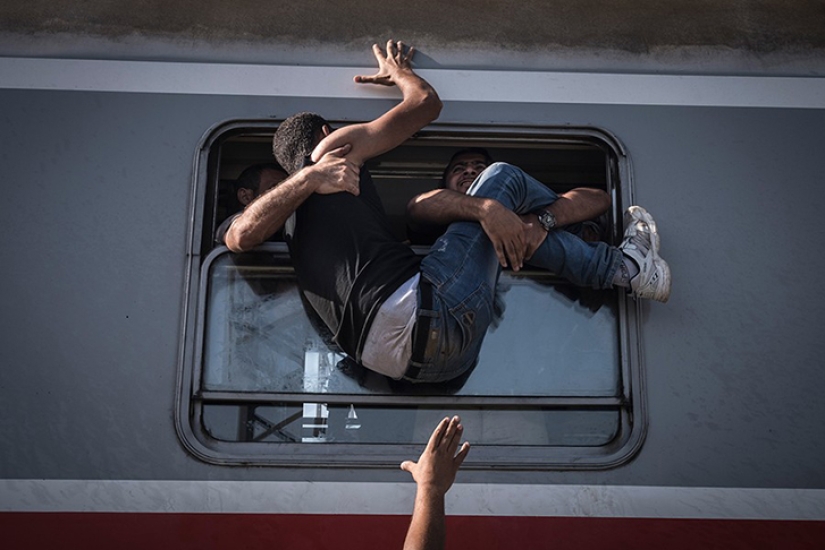
Desperate refugees try to board a train to Zagreb at Tovarnik station on the Serbian border. As border countries tightened border controls, thousands of migrants and refugees flocked to the Balkans, escalating tensions in a region that is still rife with ethnic groups and far from ready to deal with the migrant crisis. (Sergey Ponomarev, The New York Times - September 18, 2015)
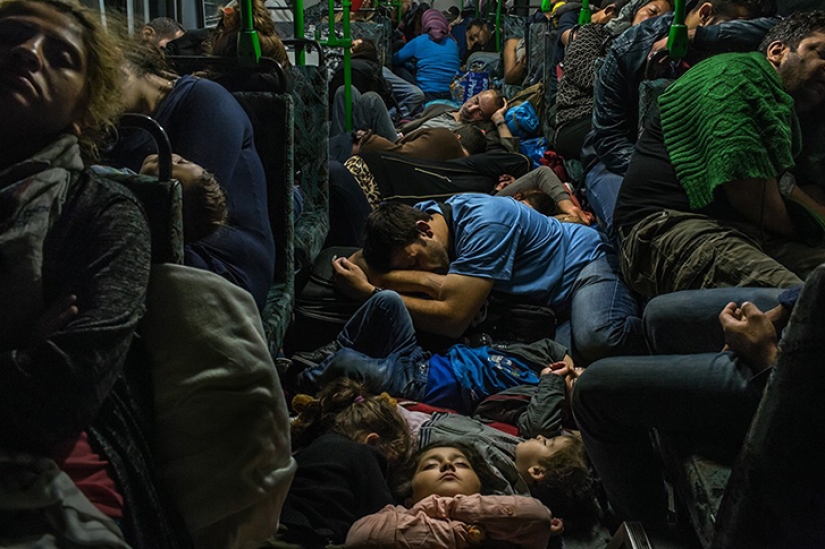
Ahmad Majid, in a blue T-shirt in the center, sleeps on the floor of a bus with his children, his brother Farid Majid, who is wearing a green sweater, other relatives and dozens of other refugees who left Budapest for Vienna. Hundreds of thousands of refugees, most from Afghanistan, Iraq and Syria, have fled their homes, risking their lives for dangerous boat trips, illegal border crossings and long bus and train journeys in search of asylum in Eastern Europe and Scandinavia. (Mauricio Lima, The New York Times - September 5, 2015)
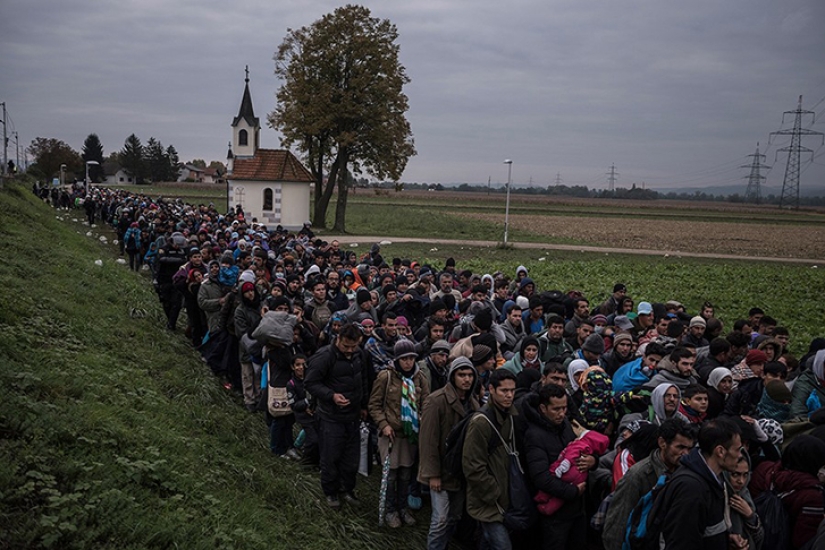
Migrants escorted by Slovenian special forces walk past a church to a registration camp near Dobova in Slovenia. On their way to Europe, a record number of refugees crossed the borders of small Balkan countries that could hardly cope with such a large number of people. (Sergey Ponomarev, The New York Times - October 22, 2015)
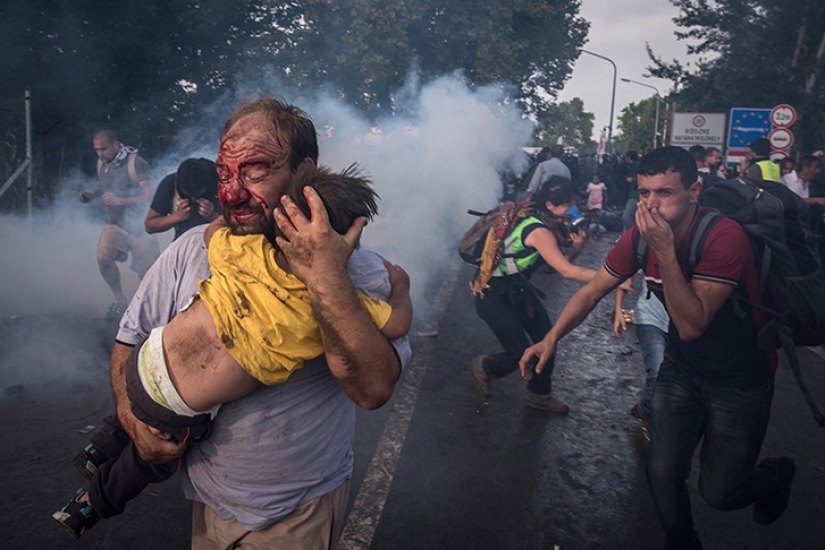
A man tries to protect his child from police strikes and tear gas at the border in Khorgos, Serbia. Hungarian special forces armed with batons used tear gas and water cannons against hundreds of migrants who broke through a barbed wire fence and tried to cross from Serbia into Hungary. (Sergey Ponomarev, The New York Times - September 16, 2015)
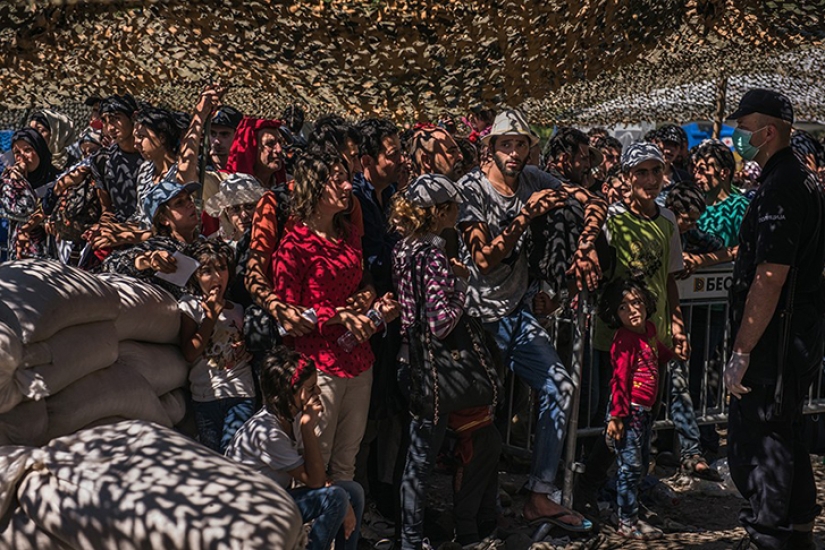
Refugees line up for documents at a processing center in Presevo, Serbia. People stood in long lines in the sun, begging the guards to let them inside. Registration gave the refugees the opportunity to move on after Serbia. In Serbia, they could register to legally stay in the country for 72 hours and even get the right to stay in a hotel. (Sergey Ponomarev, The New York Times - August 27, 2015)
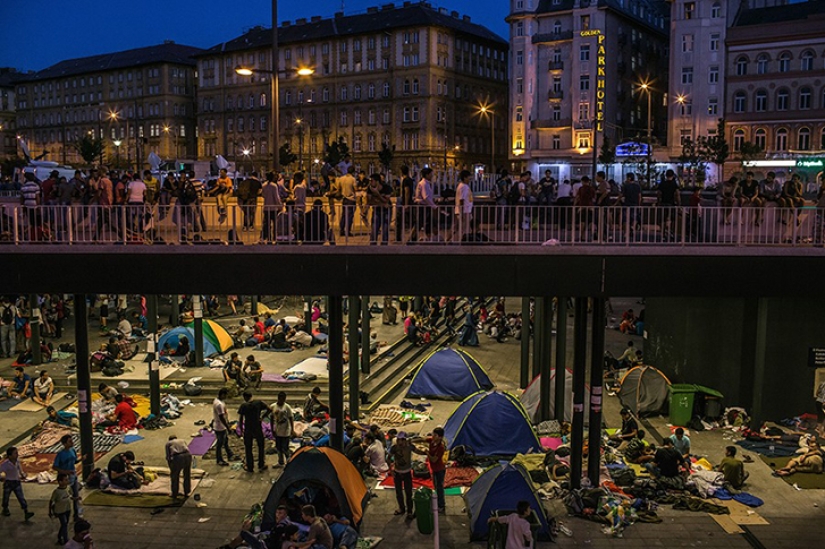
Dozens of refugee families, mostly from Syria, have settled under the Keleti railway station in central Budapest. (Mauricio Lima, The New York Times - September 1, 2015)
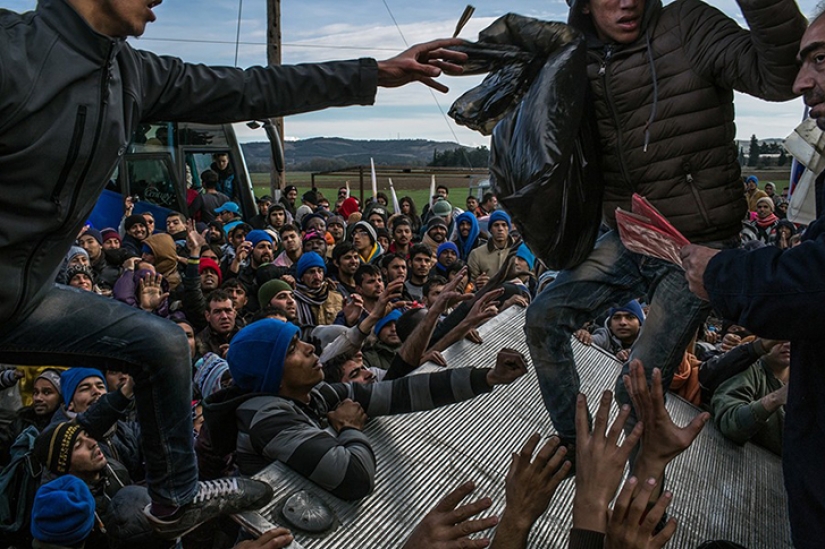
Refugees from Pakistan, Bangladesh, Morocco, Algeria and Somalia are trying to get water, blankets, diapers and some clothes on the tenth day of their stay in the camp in Idomeni (Greece). They were not allowed to cross the border into Macedonia. Only refugees from Afghanistan, Iraq and Syria were allowed to continue their journey. (Mauricio Lima, The New York Times - November 28, 2015)
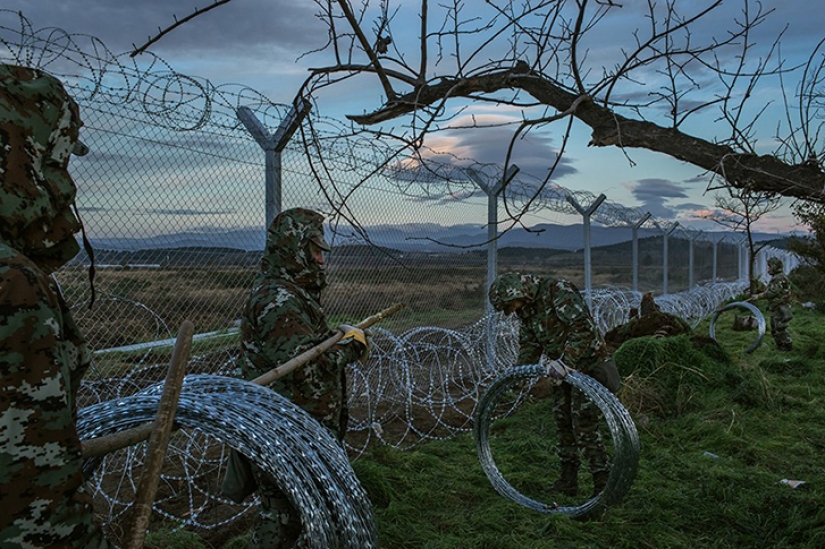
Macedonian soldiers on the Greek side of the border have built a barrier that separates the Macedonian city of Gevgelia from the Greek city of Idomeni, where 2,500 refugees have been barred from entering Europe. (Mauricio Lima, The New York Times - November 28, 2015)
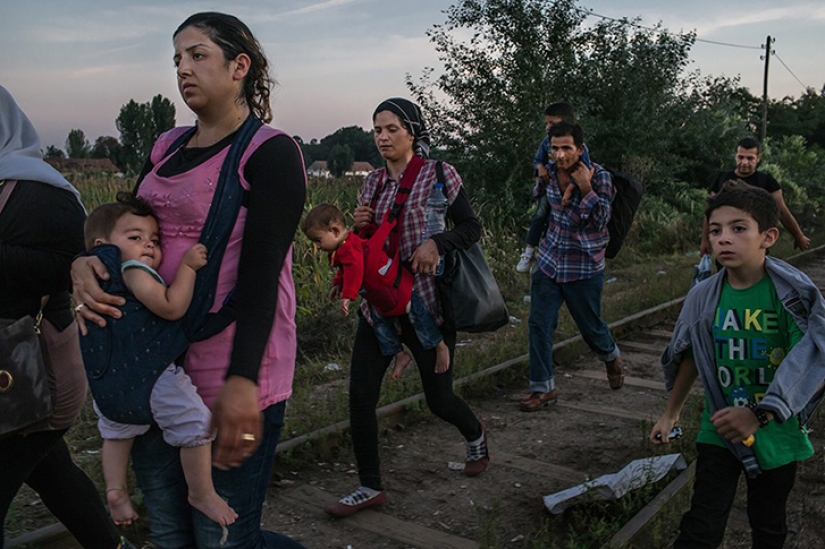
Rujin Sheikho from Syria (left) carries his daughter Vidad, while her son Nabi (right) walks with other refugees along the railroad tracks to the Hungarian border crossing at Serbian Khorgos. (Mauricio Lima, The New York Times - August 30, 2015)
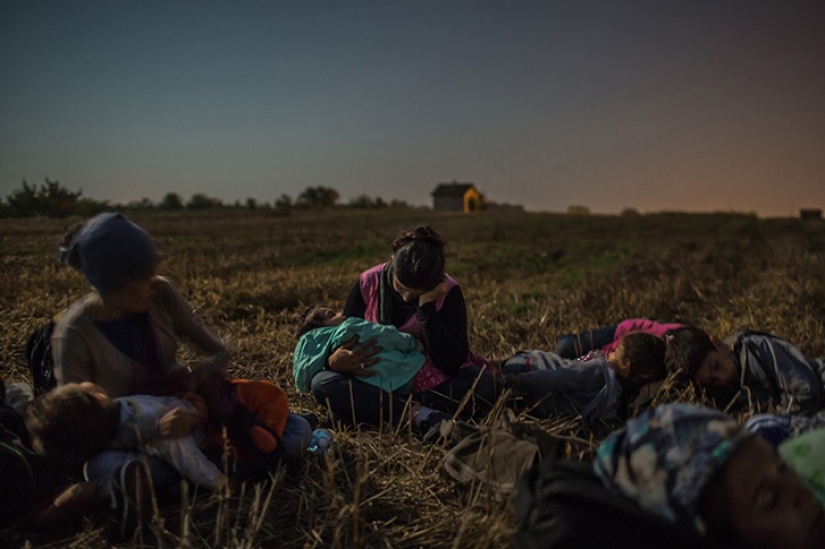
Majid's relatives sleep with their children in their arms in a wheat field. They are waiting to cross the barbed wire fence separating Serbia from Hungary at Khorgos. (Mauricio Lima, The New York Times - August 31, 2015)
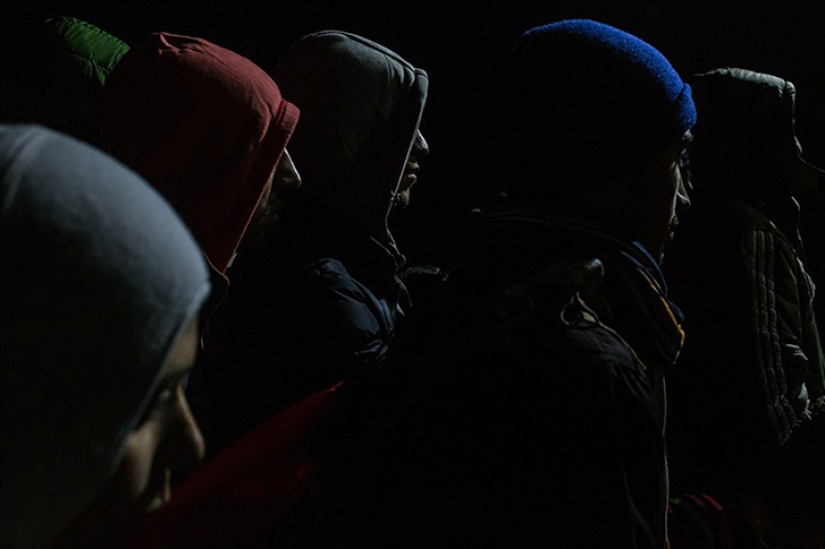
Refugees queue to register at a reception point in Gevgelija, Macedonia, before taking a train to Belgrade and continuing across the Balkans to Europe. (Mauricio Lima, The New York Times - November 21, 2015)
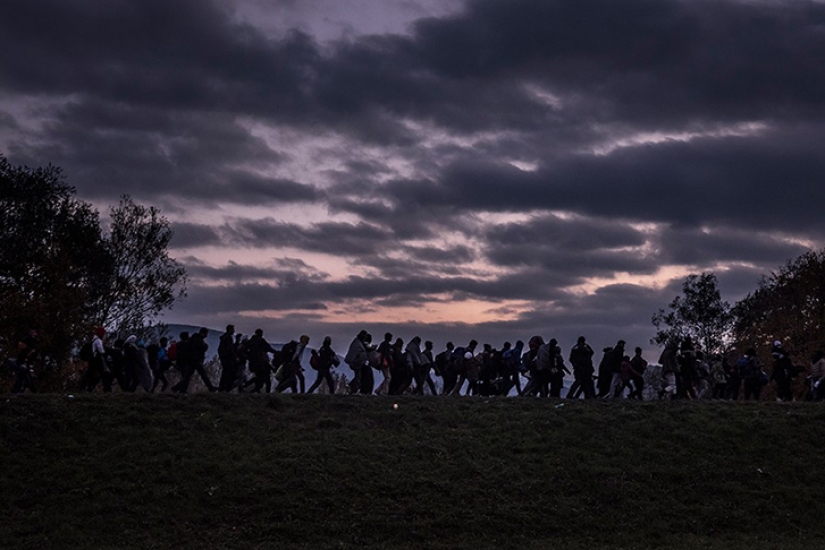
Migrants, accompanied by Slovenian special forces, walk along the dam to a registration camp near Dobova. Despite hope among Europeans that a cold snap and rough seas will curtail the flow of migrants, new clashes in Syria and fears of border closures have forced more people to make the perilous journey to Europe. (Sergey Ponomarev, The New York Times - October 23, 2015)
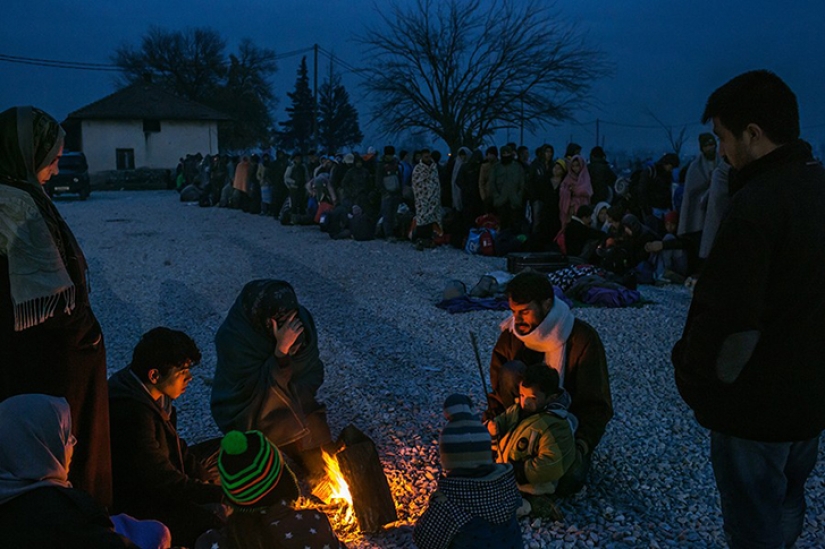
A Syrian refugee family warms up by a fire while others queue to register at a reception camp in Gevgelija, Macedonia. (Mauricio Lima, The New York Times - November 21, 2015)
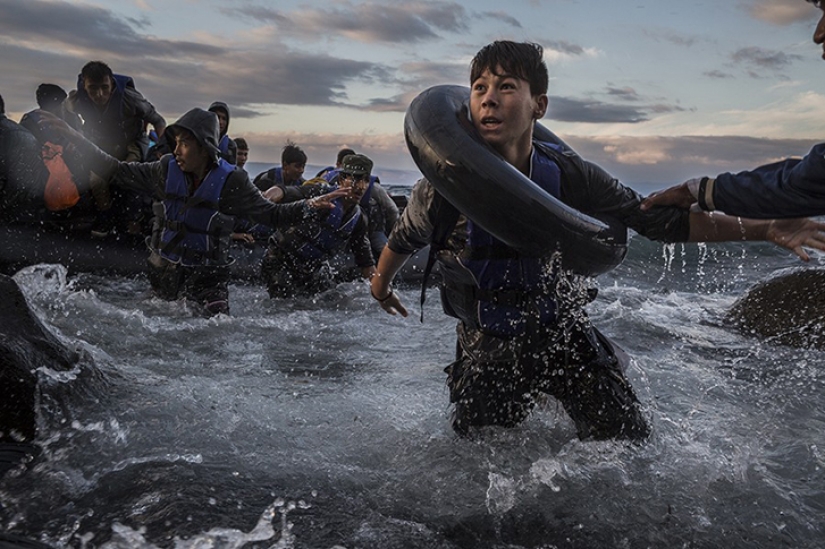
After surviving a storm and high winds at sea in Turkey, migrants arrive on rubber rafts to the jagged coast of the island of Lesvos. Fearing that the raft would capsize or make a hole, the migrants jumped into the icy water and tried to get to the shore as soon as possible. This boy succeeded, unlike hundreds of others. (Tyler Hicks, The New York Times - October 1, 2015)
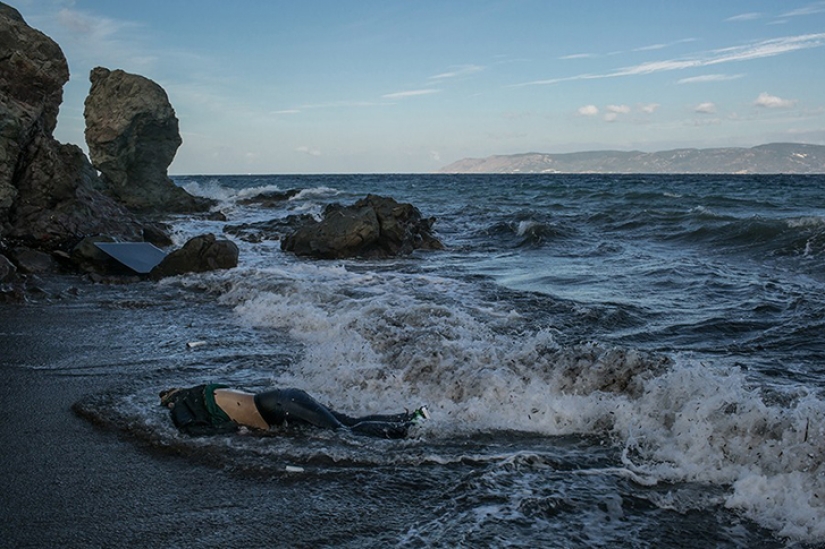
The body of a refugee who tried to cross the Aegean from Turkey, on the island of Lesbos. Three other bodies were also found that morning - a 12-year-old girl, a middle-aged man and an elderly person. (Mauricio Lima, The New York Times - November 1, 2015)
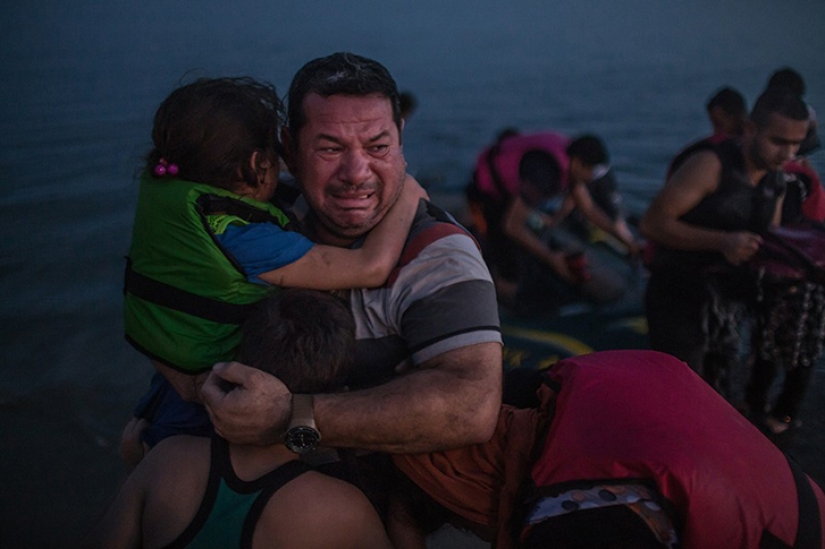
Laith Majid of Iraq burst into tears as he held his daughter and son in his arms as they made it safely to Kos in Greece in a rickety rubber boat. (Daniel Etter, The New York Times - August 15, 2015)

A huge mountain of used life jackets, breathing tubes and deflated rubber boats - the main equipment used by thousands of refugees who crossed the Aegean Sea and got from Turkey to the Greek island of Lesvos. (Mauricio Lima, The New York Times - November 7, 2015)
Keywords: Refugees | Journalism | Crisis | Migrants | Pulitzer Prize | Pulitzer photography | Photojournalism
Post News ArticleRecent articles

American Alex Greenberg, who moved to China, collects funny and brain-bearing examples of Chinese fashion in his Shanghai Observed ...

New Year is a holiday of magic and fulfillment of wishes. Naturally, I want this holiday to be remembered for a long time and to be ...
Related articles

Bruce Gilden is a legendary photographer, famous for his impressive portraits of ordinary passers-by on the streets of New York. He ...

In Britain of the 19th century, girls who reached the age of 13 were recognized as adults. This was not at all surprising, because ...

Before Stanley Kubrick began making great science fiction and horror films, one of his first attempts to become famous was working ...

In a recent issue of sexual harassment on everyone's lips. Inappropriate and Intrusive signs of attention began to see around, even ...